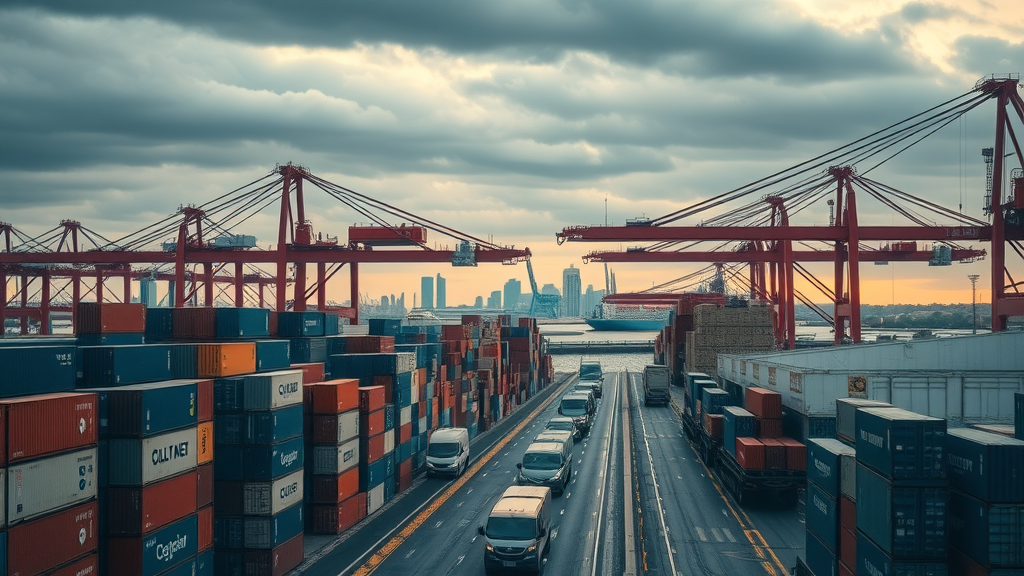
Did you know the average American family pays up to $800 more each year because of tariffs on Chinese goods? While these tariffs are presented as a way to protect domestic industries and level the playing field, their hidden impact on your daily expenses might shock you. From electronics and clothing to everyday groceries, the trade war between the United States and China isn’t just a distant dispute—it’s already reaching into your wallet. If you’ve ever wondered who really pays for these tariffs or how new policies from President Trump to President Biden have shifted the story, this article will open your eyes to the true costs behind the headlines.
You Might Be Paying More Than You Think: A Look at Tariffs on Chinese Goods Through the Lens of the Trade War
The immediate impact of tariffs on Chinese goods might not always be visible at the checkout counter, but the costs quietly add up across the supply chain. Initially framed as penalties for China’s alleged unfair trade practices and attempts to reduce the trade deficit , these tariffs have affected a vast array of imports from China—ranging from apparel to consumer electronics and even critical components like rare earth minerals. For many Americans, the direct result has been higher prices for household goods and a ripple effect on inflation, especially since China supplies a significant portion of what we use daily.
Consider, for example, the smartphone in your hand or the television in your living room. Both likely contain components imported from China and are subject to the increased tariff rate imposed during the most intense stages of the trade war . Meanwhile, industries that depend on parts or raw materials from China—such as auto manufacturing and construction—have also seen their costs rise, inevitably passing those expenses down the line. As tensions fluctuate and new trade deals are debated, the uncertainty alone has prompted many companies to adjust pricing, stockpile goods, or seek supply alternatives—all actions that impact how much average consumers ultimately pay.
For businesses and individuals looking to minimize the financial impact of these shifting tariffs, exploring practical strategies can make a significant difference. If you want actionable tips on safeguarding your bottom line amid ongoing trade war developments, check out this guide on how to protect your profits from trade war tariffs .

Startling Insights: How Tariffs on Chinese Goods Impact Everyday Americans
When the United States imposed sweeping tariffs on Chinese goods , the intention was to pressure China into new negotiations. Yet, findings from respected trade economists show that nearly all these costs are born not by Chinese exporters, but by American importers and, eventually, U.S. consumers. Price hikes on appliances, toys, and even groceries have become a reality for many households. Prolonged uncertainty and increased costs of doing business have especially hurt those with fixed or tighter budgets, including low- and middle-income families. In particular, small businesses—already squeezed by the pandemic and supply chain delays—report that they cannot always absorb these extra costs. Instead, they’ve been forced to make tough choices: Raising their own prices, cutting back on employees, or seeking alternative suppliers, all of which contribute to a climate of financial anxiety for everyday Americans.
Evidence also indicates an uneven distribution of these impacts, where higher-income households may weather minor price spikes, but budget-conscious consumers experience disproportionate consequences. The result is that tariffs, in practice, operate like a regressive tax—affecting those who can least afford it the most. The unpredictable nature of tariff policy changes, especially as new executive orders take effect or new reciprocal tariffs are announced between trading partners, has further complicated personal financial planning for millions of Americans nationwide.
Understanding Tariffs on Chinese Goods: Definitions, History, and Policy Shifts
To grasp how tariffs on Chinese goods shape your expenses and the broader economy, it’s crucial to understand not only what tariffs are but how they work within the framework of global trade practice. Tariffs are essentially taxes imposed by a government on imported goods. In the case of US-China relations, these import duties were intended to counter perceived unfair trade practices by China, like forced technology transfers and subsidized exports. The logic behind implementing higher tariff rates is to make foreign products more expensive, thereby providing an advantage to domestically produced equivalents. This approach, however, comes with trade-offs, as American businesses relying on imports from China grapple with higher input costs, while consumers end up paying more.
Shifting trade policies, orchestrated by a series of executive orders that began in earnest under President Donald Trump, have repeatedly raised and recalibrated the tariff rates imposed on Chinese goods. These policy pivots—often in response to reciprocal actions by China—have sent companies into a scramble, sometimes prompting a rush to import goods before new tariffs kick in. The volatility not only affects prices but also creates strategic pressures across global supply chains, with far-reaching implications for financial markets and even national security, as certain materials critical to US industry (like rare earth elements) come under scrutiny.
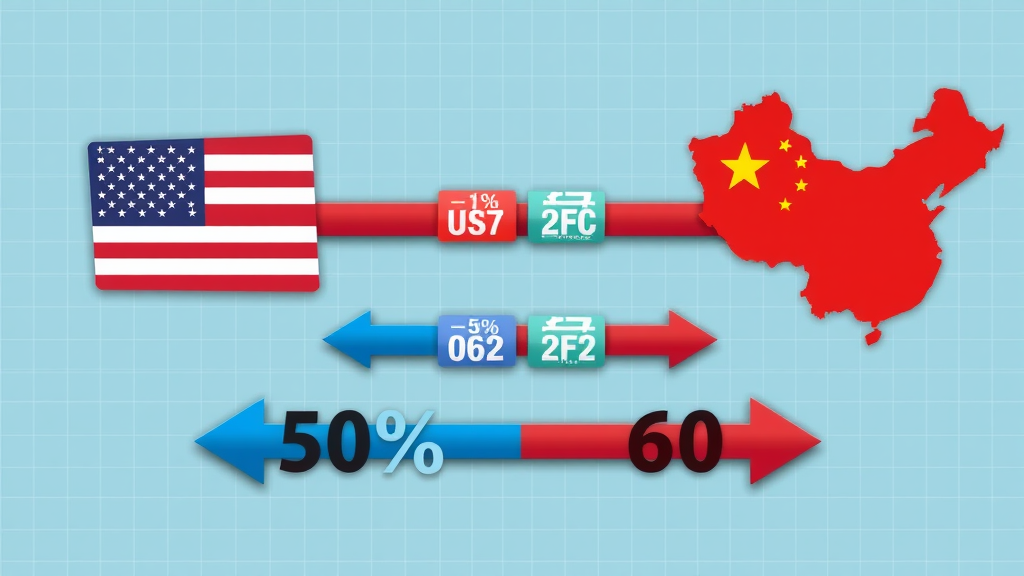
What Are Tariffs on Chinese Goods? Clarifying Tariff Rates, Reciprocal Tariff Logic, and China Tariff Mechanics
The mechanics behind tariffs on Chinese goods might seem straightforward—a percentage fee on goods imported from China—but the real-world application involves more nuance. Tariff rates can differ based on product category, strategic urgency, and ongoing negotiations: for example, some imports are charged a modest 10% while others, like certain steel or solar panels, face rates as high as 25% or more. This sliding scale not only influences supply chains but creates incentives for companies to reclassify goods, reroute shipments, or even relocate manufacturing to avoid the highest duties. The use of reciprocal tariffs —where China matches or exceeds US-imposed tariffs with its own penalties on American goods—further complicates trade flows and pricing strategies.
These layered tariff rates have become the centerpiece of the current trade war strategy, testing the logic that penalizing imports will eventually bring trading partners to the negotiating table for a better trade deal . However, economists warn that reciprocal tariff battles often spiral, raising costs for both nations and stoking inflation as supply chains reconfigure. The rules and thresholds determining when a product faces tariffs, how much, and what exceptions exist (such as exclusions for medical equipment during a health crisis) fluctuate depending on evolving diplomatic strategies and industry lobbying.
A Timeline of Tariffs on China: From President Trump to the Present Trade War Strategies
The modern escalation of tariffs on Chinese goods began in 2018, when President Donald Trump signed an executive order aimed at curbing Chinese intellectual property theft and unfair trade subsidies. His administration then expanded the scope and tariff rate year after year, targeting electronics, machinery, rare earth elements, and everyday consumer products. Each new round of tariffs prompted both immediate and retaliatory responses, triggering not only higher prices but also intense debate within the US government about the best way forward.
As the trade war gathered steam, major changes occurred almost yearly, with policy shifts echoing from the White House to boardrooms worldwide. President Biden has altered but not fundamentally reversed many of the Trump-era tariffs, instead focusing more on strategic calibrations, targeted reliefs, and intensified efforts to build more resilient and diversified supply chains. The ongoing story is one of tension, negotiation, and shifting priorities, with the landscape likely to evolve as new trade deals and security concerns emerge.
| Year | Administration | Key Product Categories | Tariff Rate Range | Notable Actions |
|---|---|---|---|---|
| 2017 | Pre-Trump | Regular goods | 2–4% | Normal trading status |
| 2018 | Trump | Steel, aluminum, electronics | 10–25% | Trump signed first executive order for higher tariffs |
| 2019 | Trump | Consumer electronics, apparel, rare earths | Up to 25% | Expanded tariff list, reciprocal tariffs by China |
| 2020 | Trump/Biden Transition | Medical supplies (exceptions), machinery | Most major categories 10–25% | Some exclusions, heightened trade war tensions |
| 2021-2023 | Biden | Strategic goods, rare earth, solar panels | Targeted adjustments, up to 50% on some | Focused tariffs, efforts for supply chain resilience |
| 2024 | Biden | Critical tech, clean energy, dual-use goods | 10–25% (most); higher on select products | Selective escalations and strategic trade negotiations |
Who Really Pays? Economic Perspectives on Tariffs on Chinese Goods and the China Tariff Controversy
It’s a common misconception that tariffs on Chinese goods are a bill sent directly to foreign exporters. In reality, it’s American importers—companies who bring goods from China into the US—who pay the added tariff fees at the border. These added costs are routinely passed down through the supply chain, meaning retailers and, ultimately, end-consumers bear the financial burden. Recent studies by leading economists show that less than 8% of tariffs are absorbed by Chinese exporters, with more than 90% becoming part of the sticker price American consumers pay. This cost transmission mechanism is especially pronounced for goods with little domestic competition, where Chinese imports dominate the market.
The ripple effect doesn’t stop at simple price increases. When tariff rates spike, affected industries may slow hiring, cut expansion plans, or pass the pain onto their workers and local suppliers. Business uncertainty has become the norm, especially for companies with complex supply networks. As negotiations linger and reciprocal tariffs continue to escalate, companies of all sizes find themselves trapped in a strategic chess match with only one certain outcome—higher expenses for nearly everyone.
Are Tariff Rates Passed to US Consumers? Exploring the Price Impact of Tariffs on China
“Tariffs on Chinese goods are not paid by China—they’re added to the cost for American importers, and ultimately, everyday consumers.” — Leading Trade Economist

The price impact of tariffs on Chinese goods has become impossible to ignore. Whether you’re comparing receipts at the grocery store or shopping for electronics online, the cumulative effect is plain as day. American importers buy large shiploads of Chinese goods, pay the tariff tax to US Customs, and then recover those costs by increasing the price for distributors and consumers. This isn’t just a matter of numbers on paper; it genuinely influences the cost of living, feeding directly into the US’s broader inflation story.
Research suggests that in some product categories, like major appliances or apparel, as much as 80% of the tariff rate gets channeled straight into higher end-prices. Unlike a VAT tax at the register, however, tariffs are hidden in the overall price, making it difficult for consumers to pin down exactly how much more they’re spending. With American companies less able to absorb added expenses—especially small businesses that already operate on thin margins—these costs have become a stubborn part of America’s economic landscape.
Reciprocal Tariff Claims: Does the US Policy on Tariffs on China Match China’s on US Goods?
The idea behind reciprocal tariffs is both simple and seductive: If another country taxes our goods at a certain rate, the US should respond in kind. In practice, however, these tit-for-tat measures often create further complications for both economies. While China has retaliated with tariffs of its own—sometimes reaching 25% or more on US agricultural products, automobiles, and more—each escalation encourages even stronger responses, creating a feedback loop that rarely leads to a stable resolution.
From farm products like soybeans to manufactured electronics and vehicles, both sides have selected tariffs strategically to inflict maximum pressure where the other is most exposed. The result is an increasingly fractured trading relationship, where uncertainty hangs heavy over global supply chains and the possibility of lasting trade deals recedes into the background. As the logic of reciprocal tariffs dominates headlines, the true winners and losers become harder to identify—and the collateral damage keeps spreading.
Presidential Perspectives: President Trump, President Biden, and the Politics of the Trade War
President Trump and the Rise of Tariff Rates on Chinese Goods

President Donald Trump made headlines worldwide when he launched an aggressive new era of tariffs on Chinese goods . Frustrated by persistent trade deficits with China and reports of unfair trade practices , Trump signed a series of executive orders and adjusted tariff rates across huge categories of Chinese imports, sometimes seemingly overnight. The new tariffs targeted over $350 billion in Chinese goods , including everything from electronics and machinery to clothing and toys. At the White House podium, Trump justified the moves as necessary to protect national security and bring China to the negotiating table, criticizing previous administrations for not acting sooner.
Supporters of these measures argued that they were overdue correctives to decades of US economic policy, forcing China to address practices like forced technology transfer and export controls on critical resources such as rare earth minerals. Critics, however, pointed out that the fallout was immediate and widespread: American importers—and ultimately, consumers—faced higher prices, escalating tit-for-tat tariffs hit US farmers and manufacturers, and the global supply chain became a battleground. The Trump administration’s willingness to use tariffs as a primary weapon in the trade war set the tone for a new era in US-China relations—and left an indelible mark on American commerce.
From President Donald to President Biden—Shifting Strategies on China Tariff Policies

The transition from President Trump to President Biden brought an initial hope for significant easing of tariffs and a return to traditional diplomacy. Instead, the Biden White House adopted a more measured but still firm stance, retaining most Trump-era tariffs but refining their application through a policy lens focused on national security and building supply chain resilience. Biden’s team prioritized targeted, strategic tariffs on goods seen as crucial to the future economy or military advantage (such as semiconductors and clean energy products), rather than broad sweeping categories.
This evolving policy reflects a pragmatic understanding that reversing the previous administration’s actions overnight might undercut American leverage during ongoing trade negotiations—or signal weakness on global trade enforcement. The Biden administration has also placed more emphasis on multilateral coordination with other major economies, working to counteract potentially destabilizing moves by trading partners such as Russia (for instance, with export controls on certain goods like russian oil ). Nevertheless, the cumulative effect of several years’ worth of tariffs on Chinese goods has reshaped US trade policy, with many questions about the long-term wisdom of these trade war strategies yet to be resolved.
The Ripple Effect: How Tariffs on Chinese Goods Reshape US Businesses and Supply Chains
Winners and Losers: Which US Industries Suffer or Benefit From Tariffs on China?
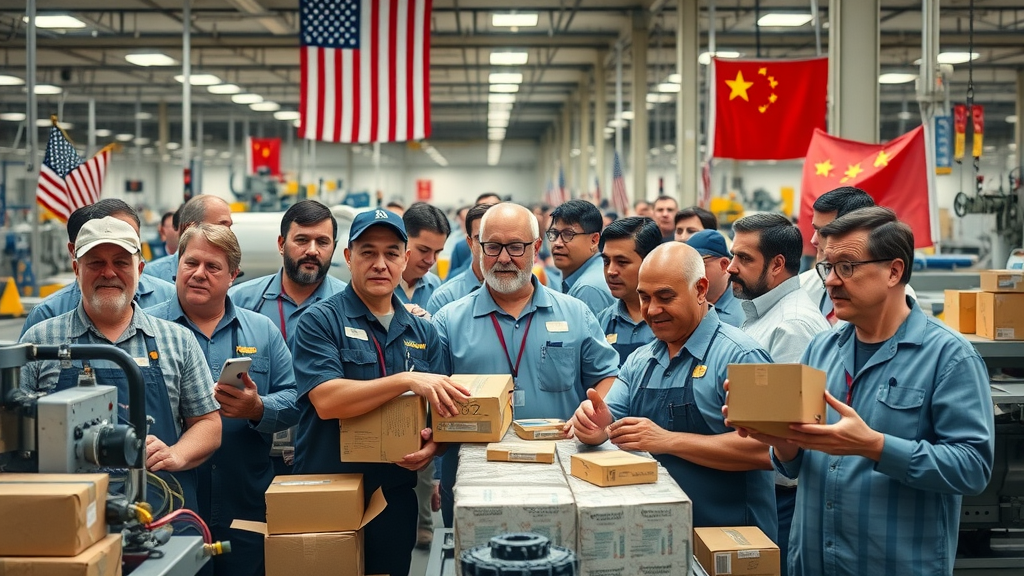
Tariffs on Chinese goods have split American industries into clear winners and losers. Domestic manufacturers producing goods directly competing with Chinese imports (such as steel, aluminum, or select electronics) enjoyed a short-term boost, as higher import costs drove more demand for American-made products. However, the story for the majority is far more mixed. Companies reliant on parts or materials from China, including the automotive, technology, and retail sectors, have reported rising costs, project delays, and difficulty maintaining profit margins. For instance, US companies assembling electronics must pay a higher tariff rate for every imported circuit board or microchip, with those costs quickly cascading into the end price of the finished product.
The situation is even more dire for industries that export significant amounts of American goods to China, such as agriculture. China’s retaliatory tariffs on US soybeans, pork, and various agricultural commodities have reduced market access, causing deep uncertainty for farmers. While isolated sectors and some jobs have benefited from the tariff regime, the overwhelming effect has been to amplify the unpredictability faced by virtually all sectors tied to global supply chains.
Small Businesses and Tariffs on Chinese Goods: Less Wiggle Room in the Trade War
For small and medium-sized businesses, the margin for error is wafer-thin. After years of navigating the dual stressors of pandemic disruption and shifting tariff rates , many small businesses are being forced to absorb higher costs or risk losing customers by raising prices. Unlike large multinational corporations, these firms lack the leverage to negotiate special deals with suppliers or reroute their entire supply chains on short notice. Often, their only recourse is to eat the extra costs, cut staff, or reduce service quality, which can quickly threaten their viability in the long run.
- Increased operational costs
- Delayed shipments and supply chain disruption
- Rising prices for consumers
- Search for alternative suppliers
Compounding the pressure, many small firms report significant difficulty accessing the legal expertise and regulatory guidance needed to navigate the ever-changing landscape of US-China tariff rules. This lack of "wiggle room" underscores the fact that tariffs can be a blunt policy instrument, often with disproportionate impacts on those least able to bear them.
People Also Ask: Did the US Impose Tariffs on Chinese Goods?
Yes, the US imposed tariffs on Chinese goods starting in 2018, as part of an escalating trade war strategy. These tariffs targeted hundreds of billions in Chinese imports to pressure China into negotiating trade concessions.
These moves marked a sharp escalation in the US-China trade relationship, moving beyond negotiation into open tit-for-tat retaliation. The initial tariffs affected a wide array of imports from China, including electronics, industrial parts, and everyday consumer items—an unprecedented expansion in scope that transformed the global trade landscape almost overnight. The legacy of this move is still felt today, not only in government policy but in the everyday costs consumers face.
People Also Ask: What Are the Current Chinese Tariffs?
Current Chinese tariffs include a range of reciprocal tariff measures on US goods, with some products facing tariff rates as high as 25% or higher, depending on ongoing negotiations and trade war developments.
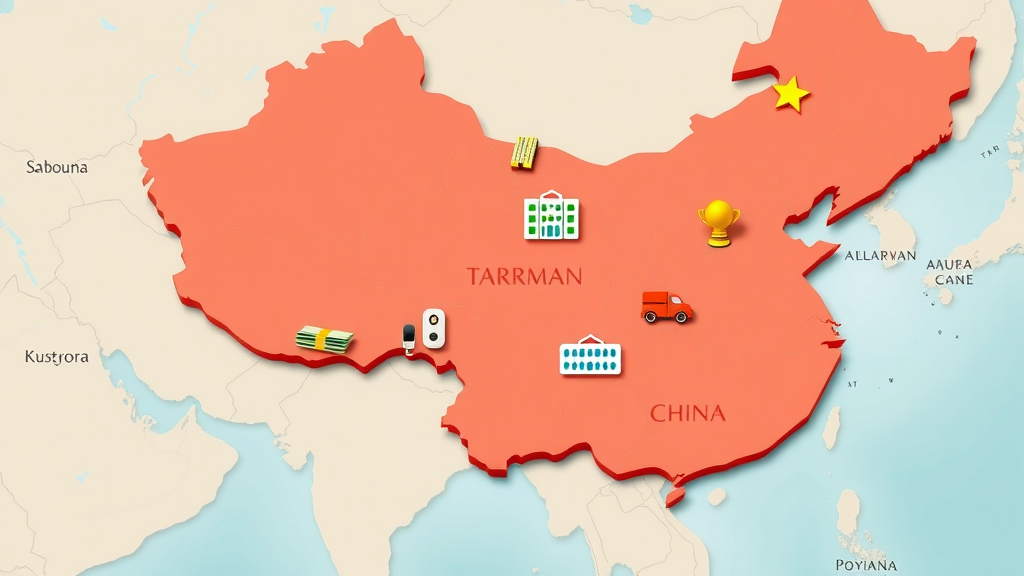
China’s own tariff response aligns with a reciprocal logic, hitting American exports in politically sensitive sectors like agriculture, automotive, and technology. These elevated tariff rates have complicated US-China trade negotiations, encouraging many American exporters to seek new markets or adapt products to fly under tariff thresholds. The ultimate effect is increased cost, reduced access, and thinner margins for US producers seeking to maintain a global footprint.
People Also Ask: Are There Tariffs on Packages from China to the USA?
Most consumer packages under the de minimis threshold (typically $800) are not subject to formal tariffs, but larger commercial shipments are hit by the same tariffs on Chinese goods as bulk imports.
While casual shoppers ordering single items from Chinese e-commerce platforms ( imports from China ) may be exempt from paying tariffs thanks to the “de minimis” rule, businesses shipping goods above this threshold are subject to the full brunt of current tariff rates. Larger online resellers and established importers must navigate complex customs rules and fluctuating charges, making it much harder to maintain competitive pricing.
This distinction has left a loophole that some retailers attempt to exploit by splitting shipments or under-declaring value. However, with customs enforcement tightening and scrutiny increasing, businesses face renewed pressure to comply or risk harsh penalties.
People Also Ask: Is the US Tariff 245% on China?
While some niche goods, like certain steel or solar panels, have extremely high tariff rates, the average US tariff on Chinese goods is significantly lower, with most major products in the 10-25% range.
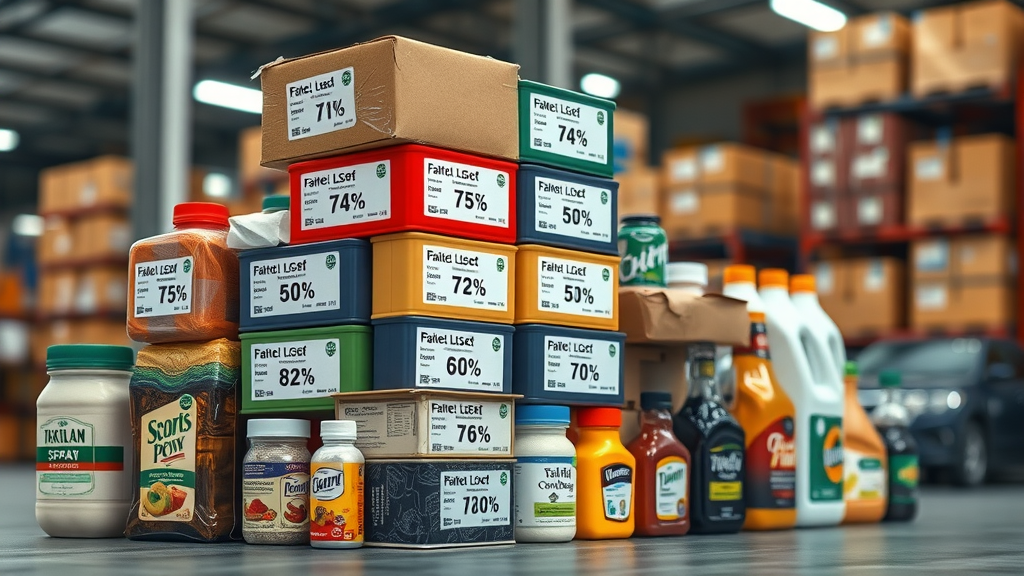
Sensational headlines about “245% tariffs” refer to specific, narrowly defined product categories subject to unusually high rates—often due to findings of dumping (selling below cost) or national security concerns. For the majority of everyday items imported from China, tariff rates are much more modest but still impactful, especially when spread across billions of dollars in annual imports. It’s these more common tariffs, quietly embedded in product prices, that shape your shopping experience and the overall economy far more than attention-grabbing outlier rates.
Comparing Tariff Rates: Is the US an Outlier in Tariffs on Chinese Goods?
While the United States has taken an aggressive approach to tariffs on Chinese goods in the context of the recent trade war , it’s not alone in using import duties as a bargaining chip. The EU, Japan, and other major economies have adjusted their own tariff policies in response to shifting global power dynamics and to defend strategic sectors. However, few have matched the US’s scale—either in the quantity of goods affected or the average tariff rate applied to key product categories. Nevertheless, the global environment remains highly fluid, with countries constantly adjusting strategy in response to one another’s actions, international trade rules, and new economic pressures.
| Country/Economy | Average Tariff Rate on Chinese Goods | Products with Highest Tariffs | Recent Policy Change |
|---|---|---|---|
| United States | 10–25% (standard); up to 245% (select cases) | Steel, solar panels, electronics | Trump-era tariffs largely retained under Biden with strategic adjustments |
| European Union | 3–13% | Solar panels, e-bikes, tech | Targeted anti-dumping duties on specific Chinese imports |
| Japan | 2–10% | Electronics, machinery | Minor adjustments in response to global supply trends |
| China (on US goods) | 5–25% (reciprocal tariffs) | Agricultural, autos, tech | Tit-for-tat escalations since 2018 |
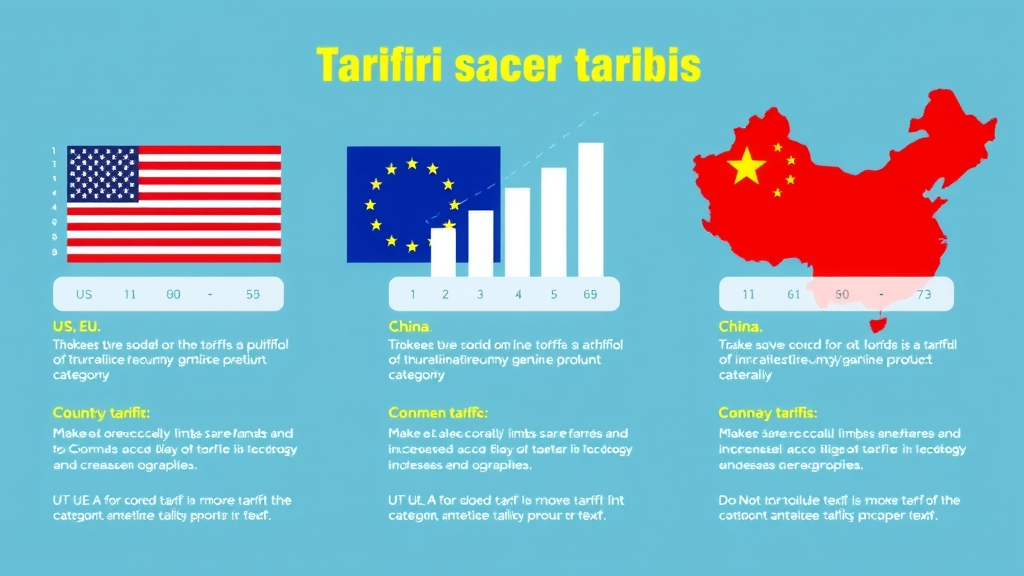
Consumer Strategies: What Can US Buyers and Businesses Do About Tariffs on Chinese Goods?
- Source from non-Chinese suppliers
- Negotiate prices with suppliers
- Reclassify products for lower tariff rates
- Participate in public comment periods
- Monitor evolving US-China trade war news
If you’re a business owner or an engaged consumer, you’re not powerless in the face of higher tariffs. By diversifying your supply base, consistently reviewing product classification codes, and staying vocal during government consultation periods, you can limit exposure. Larger firms may even invest in lobbying to influence trade policy outcomes, while everyday buyers should track changes in product pricing and remain flexible with buying habits. The trade war may rage on, but informed and proactive decision-making can help mitigate its effects—both on your business and your bottom line.
Essential FAQs About Tariffs on Chinese Goods and the Trade War
How have tariffs on China affected inflation in the US?
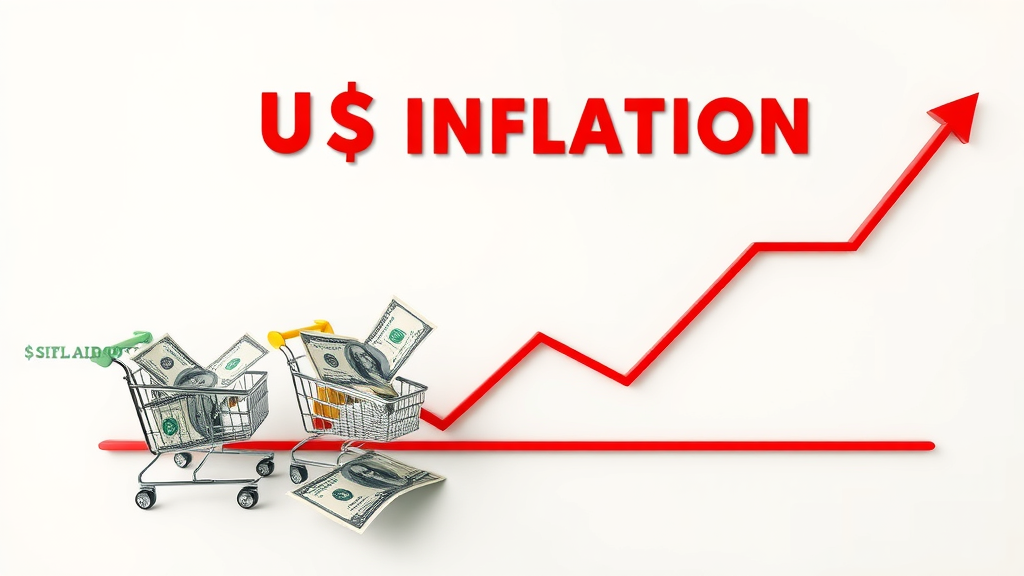
Tariffs on Chinese goods have directly contributed to rising prices in many key sectors, particularly those most dependent on Chinese imports. As businesses face higher input costs, they often raise retail prices to maintain profit margins. According to researchers, a significant share of recent US inflation can be traced to the increased cost of imported goods due to tariff policies. While tariffs are not the sole factor behind inflation, they exacerbate existing pressures from supply chain disruptions, labor shortages, and global commodity shocks.
Are reciprocal tariffs always effective in international trade?
Reciprocal tariffs may seem like a straightforward way to balance the scales in international trade, but their effectiveness is hotly debated. While they can temporarily protect domestic industries and force negotiation, they often spark retaliatory actions that raise costs for everyone. Over time, persistent use of reciprocal tariffs can lead to persistent trade war cycles, supply chain disruption, and lost global competitiveness.
Key Takeaways: Tariffs on Chinese Goods, the Trade War, and Your Wallet
Tariffs on Chinese goods are far from abstract— they raise prices on everyday essentials, challenge US businesses, disrupt global supply chains, and fuel policy debate from Main Street to the White House. Stay informed, get involved, and remember: in today’s trade war , every consumer dollar and policy vote counts.
As the landscape of global trade continues to evolve, understanding the broader implications of tariff policies is more important than ever. If you’re interested in how China’s responses and threats of retaliation are shaping the future of international finance and trade dynamics, you’ll find valuable perspectives in this in-depth analysis on China’s retaliation threat and its impact on global finance . Exploring these strategic shifts can help you anticipate market changes, adapt your business strategies, and stay ahead in a rapidly changing economic environment. Dive deeper to gain the insight you need to navigate the next phase of the US-China trade relationship with confidence.
Want to Share Your Perspective on Tariffs on Chinese Goods? Partner With RP Design Web Services to Reach a Global Trade Audience
Got Something to Say About Global Trade? RP Design Web Services can put your insights on Global Trade Notes in front of the right audience. Call 203-271-7991 today and get your word out.
The recent extension of the U.S.-China tariff truce has significant implications for consumers and businesses alike. The United States and China have agreed to extend their tariff truce for another 90 days, avoiding a major escalation in trade duties that could have led to nearly a total embargo. Originally set to expire on August 12, 2025, the extension postpones substantial tariff increases—up to 145% on Chinese goods and 125% on U.S. goods—until November 10. Instead, current tariffs remain at 30% and 10% respectively, which allows U.S. retailers to import goods for the Christmas season at lower rates. ( reuters.com )
This development follows earlier trade talks in Geneva and Stockholm and comes after U.S. President Trump signed an executive order, mirrored by similar action from China’s Commerce Ministry. Treasury Secretary Scott Bessent and other officials stressed the economic impracticality of maintaining such high tariffs. While Trump seeks further Chinese concessions—such as increased soybean purchases—analysts remain skeptical about the feasibility of such demands. Despite ongoing tensions, the trade truce signals both countries’ desire to stabilize relations, although long-term issues remain unresolved. Markets responded with optimism, and experts expect continued negotiations toward a broader agreement in the fall. Additionally, Washington has been pressuring Beijing over its relationship with Moscow, including potential sanctions related to China’s purchases of Russian oil. ( reuters.com )
For consumers, particularly in regions like Utah, the impact of tariffs is tangible. Utah parents are entering the 2025 back-to-school season facing significantly higher prices on school supplies due to recent tariffs on Chinese imports imposed by President Trump’s administration. These tariffs, which affect essential items like backpacks, pens, binders, and shoes, initially spiked and have since decreased slightly, though they remain historically high. Retailers report steep year-over-year price increases, with some supplies like notebooks and glue sticks doubling in cost. The U.S. Chamber of Commerce estimates that tariffs added approximately $73 million in taxes to back-to-school goods in May and June alone. Most families had already begun their school shopping by early June, according to a National Retail Federation survey. Despite a 90-day extension for China to reach a trade agreement, the full financial impact may only become clear during the peak shopping season, testing consumers’ limits on price tolerance. The Wells Fargo Investment Institute highlights this period as a key moment to observe inflationary pressures, with July’s CPI data expected to offer further insights. ( axios.com )
In the broader economic context, the extension of the tariff truce has provided a temporary reprieve for markets. World financial markets experienced slight relief after the U.S. and China extended their trade tariff truce for 90 days, preventing the reimplementation of triple-digit tariffs. This deal maintains a 30% tariff on Chinese exports and 10% on U.S. exports. Now, investor focus shifts to the U.S. July Consumer Price Index (CPI) report. Inflation is expected to rise modestly, with core inflation possibly hitting 3.0% due to tariff-sensitive goods. Markets anticipate that the report will influence expectations for a potential Federal Reserve interest rate cut. ( reuters.com )
However, the underlying tensions remain. In 2025, U.S. President Donald Trump reignited a trade war with China, implementing aggressive tariff policies aimed at addressing fentanyl trafficking, the trade imbalance, and reviving U.S. manufacturing. Starting shortly after taking office, Trump imposed a 10% tariff on Chinese goods, which escalated to 125% by April, triggering strong retaliatory measures from China—including tariffs on U.S. agriculture, export restrictions, and corporate blacklists. Tensions peaked as both countries hiked tariffs to 125% and restricted various imports and exports. Several high-stakes negotiations followed, notably in May and June, leading to a 90-day truce in which both parties rolled back some tariffs. However, relations remained tense, with visa revocations, export bans, and further posturing from both sides. By August, negotiations had resumed, with the U.S. issuing export licenses to Nvidia and Trump urging China to boost soybean imports. The trade truce was extended another 90 days, ending the immediate escalation but leaving many economic and strategic issues unresolved. ( reuters.com )
In summary, while the extension of the tariff truce offers temporary relief, the ongoing trade tensions between the U.S. and China continue to have a profound impact on consumers, businesses, and the global economy.
 Add Row
Add Row  Add
Add 




Write A Comment